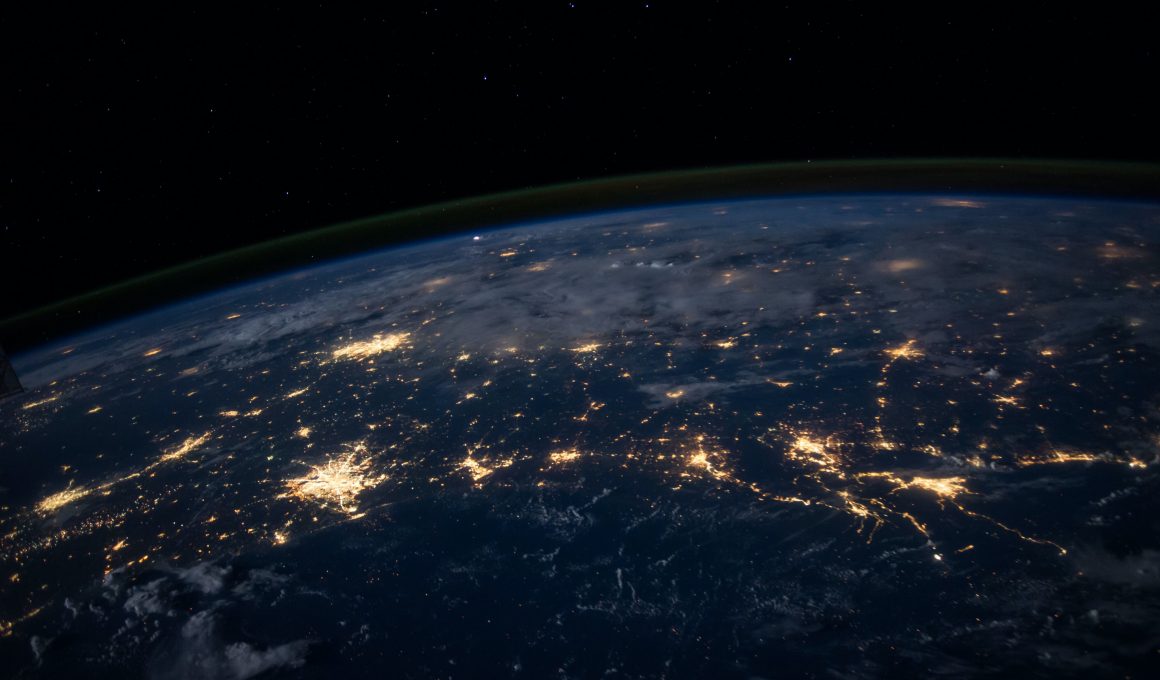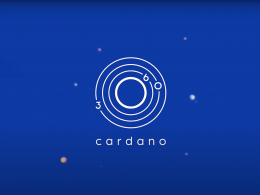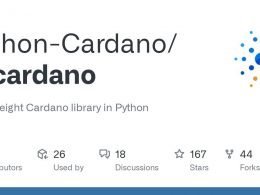I came for the money and stayed for the freedom. If you are familiar with this phrase, and maybe it has happened to you, it is because you have discovered that the crypto industry is not just a form of investment, moreover, it is not its most important contribution, but it is a means to develop a lifestyle, a new one.
I am sure that if I had mentioned the term “decentralization” to you about 10 years ago, you would probably have understood it in its simple concept, getting out of the center, the opposite of concentrating, and you would not have given it much importance. If I had then mentioned the term monopolize to you, of course you would have understood the concept, and also the significance of the word, which is to concentrate.
The importance given to the concept of decentralization is less than that of monopoly, but they are exact opposites, and therefore should have the same relevance.
I think you are understanding where this text is going, but you will see that there is more to it than you think, so be patient in your reading.
The word “Decentralization” began to be used as a product of the French Revolution, since this meant a new stage in government. The French Revolution took a giant step towards what today is called Decentralization.
Decentralization was taken to a new level by activists between the 19th and 20th centuries. This group called themselves libertarian anarchists, even at some point in history they called themselves decentralists.
A few days ago I watched a video at TEDx by Johann Gevers, Co-founder and CEO of Monetas, a blockchain platform for universal payments, established in Zug, Switzerland. In this video he exposes in a very clear way, the concept of decentralization. I will dedicate a few paragraphs to summarize it.
The Path to Decentralization
Thousands of years ago, human beings, always social, lived in small communities, distant from each other, and although they communicated, they were independent. Humans lived in a decentralized society.
But then, about 10,000 years ago, something happened that changed the social structure, the invention of agriculture. That way, technology allowed humans to produce food on a larger scale, instead of having to go and gather it.
Thus, society became concentrated around the centers of food production, creating a larger conglomerate. Before, relationships were between acquaintances, and trade was between peers, then, relationships became more anonymous, between strangers, due to the growth of these human groups.
Thus, this growth of anonymity demanded a new order for society to function. Hierarchical structures were established, where stronger men led the human groups, centralizing power and control. This was the way to organize society on a larger scale.
Power became more and more concentrated, dictatorial and unjust. The people of this new social order suffered abuses of power.
About 500 years ago, although the social scale was much larger than that which led to centralization, a new change occurred, the road to decentralization. The printing press was the first catalyst for this. Yes, once again, it was technology that brought about a new order. It allowed ideas to be communicated in space and time, to different parts of the world, and to remain so for years to come. This communication inspired the first democratic ideas, where people challenged the church, the government, in short, centralized power.
Then came different technological advances, which increased the capacity for decentralization. Internet, and more recently blockchain technology, with its pioneer, Bitcoin.
These technologies together, can be defined as Trust Technologies. Where systems based on human trust cannot scale, Trust Technology scales without limits, and thus enables decentralization, seamlessly, with larger sizes.
Trust Technology has four pillars:
- Decentralized communications: they have two essential components, internet and cryptography. Internet allows peer-to-peer communication, and thanks to cryptography it can be done without censorship, avoiding central power surveillance,
- Decentralized law: with three essential components to its legal system, choice of law, choice of adjudicator, and choice of enforcer. Choosing the law means the freedom to choose the most convenient jurisdiction for a commercial agreement, for example, choice of the Adjudicator, means who will resolve disputes and choice of the Enforcer, is who executes contracts and legal judgments.
- Decentralized production: avoids the censorship of centralized systems, and has two essential elements, decentralized production of goods and services, such as the use of 3D printing, avoiding transporting products across borders, and decentralized energy production, whereby each individual can do it off-grid and with renewable energy.
- Decentralized finance: with its components, decentralized currency and decentralized contract system.
Does this analysis sound familiar? Of course, it is the foundation of blockchain, which enables this whole design, through decentralized finance, decentralized identity and decentralized governance.
Technology made today’s globality possible, centralizing rather than decentralizing. The world’s industrial production is led by China, then India. Food production is concentrated in certain peripheral countries.
Paradoxically, technology will make it possible for the construction of a decentralized model, once again, in a new cycle in the history of humanity.
Thus, we see how social, economic-financial, and political models are developing in cycles over time, with centralization and decentralization as the axis, with a common catalyst, technology.
Technology is necessary but it is not enough to generate changes in the social order, there must be a need to be satisfied.
The blockchain decentralization model is achieved with distribution, mathematically more complex, since all the actors (nodes of the blockchain) interact with each other. Information is produced in the system, alternately by different nodes, validated in a distributed manner, and recorded in the ledger.
Thus we can understand that the information is integrated, its possession is distributed and its production is decentralized.
In order to appreciate the degree of complexity between each system, I show you this graph.
Societies are also configured in this way, and although there is a distribution of interaction, in the current cycle the trend is towards concentration, both socially and economically, preventing decentralization.
The change is coming, with distributed ledger technology (DLT), in the blockchain standard, which will make it possible to initiate the new cycle.
Living Decentralized?
You may find it difficult to visualize. To understand it better, we can start from how we live today, to see it as the opposite.
Today’s society is concentrated in large cities, which have been growing exponentially since the industrial revolution, and are overcrowded.
The opposite is to live in small cities, distributed throughout the world, being self-sustainable, but at the same time interacting with each other, communicating, trading. You might think that it is not economically possible, because transportation, due to the distances, would make trade more expensive, and to that I answer you, that currently global industrial production is concentrated in China, and everything exported from there to the rest of the world has a transportation cost. Why could it not be produced in different parts of the world, if it would also require transportation? Of course, the cost of economic scale in China is benefited by the concentration of political power that built a concentrated economy.
Living in smaller cities simplifies time and work. Think about how they live today in small towns in your country, but add to that technology that will improve lifestyle, remember I am talking about the near future, with rapidly evolving science.
Energy production is concentrated in specific centers, be it hydroelectric, coal, gas, or oil. This report says that from the 1960s through the 1980s, energy consumption in the G20 countries relied almost exclusively on two fossil fuels, oil and coal. In this century, gas and renewable energies had consumption growth. According to a new report by the International Energy Agency, renewable energy generation grew in 2020 at the fastest rate in the last two decades.
The opposite is true for energy production with different resources, and in different places. Without disregarding non-renewable energy production, and without getting into the environmental debate, energy expansion with renewables, such as wind, solar, tidal, biofuels and geothermal, can be produced where it best suits each region.
Economic income is highly concentrated in certain power groups in certain countries. A January 2018 World Bank report concluded that global wealth grew by approximately 66 % the last two decades, but inequality was considerable, given that in the high-income countries of the Organization for Economic Cooperation and Development (OECD), per capita wealth was 52 times higher than in low-income countries.
Financial inclusion is the process that ensures the availability of the formal financial system to anyone in the economy. This is the definition of the United Nations General Assembly. In a report published in 2017 by the World Bank, the Global Findex says that around 1.7 billion adults, globally, still do not have an account at a financial institution or with a mobile money provider.
The opposite, of course, is the system proposed by blockchain technology, p2p, where the commercial and financial relationship is simplified to people with each other, avoiding large banking institutions. The DeFi concept, where a large number of people, without credit knowledge, fund a liquidity pool with micro-assets to provide loans, is a clear peer-to-peer financial tool.
Education is centralized, from the government authority dictating curricula, to the way teachers teach students, giving them standard content, not allowing them to investigate, think and learn from curiosity.
The opposite is decentralized education, which goes beyond the dictation of teaching standards, it is the production of educational content and learning demands without a single center of knowledge. Communications technology facilitates this model. Humanity’s knowledge is on the Internet, and the educator’s job is to order and guide the student, encouraging him/her to research.
People are used to listening to leaders who dictate formal rules, because they have been appointed to do so, or informal ones, such as influencers in social networks, who are followed, imposing their style.
The opposite of absolute leaderships are the referents, those individuals who have prestige and social respect, who are listened to with critical attention, without assuming them as perfect beings. A decentralized society in thought is a thinking and critical society.
Thus, decentralization would lead us to change life behaviors. It occurs to me that minimalism will present itself as an opportunity that, without losing quality, proposes a more economical and less stressful lifestyle.
Decentralization has a limit, of course, not everything will be “totally” decentralized, it is not viable economically or structurally in the social area, but the centralization that exists today is high. Decentralization must be a broad construction, and not only partial.
The winds of change are blowing. Society is demanding decentralization, without mentioning the term, but it is beginning to understand it, and this is becoming possible thanks to technology. First gradually, and then suddenly.










